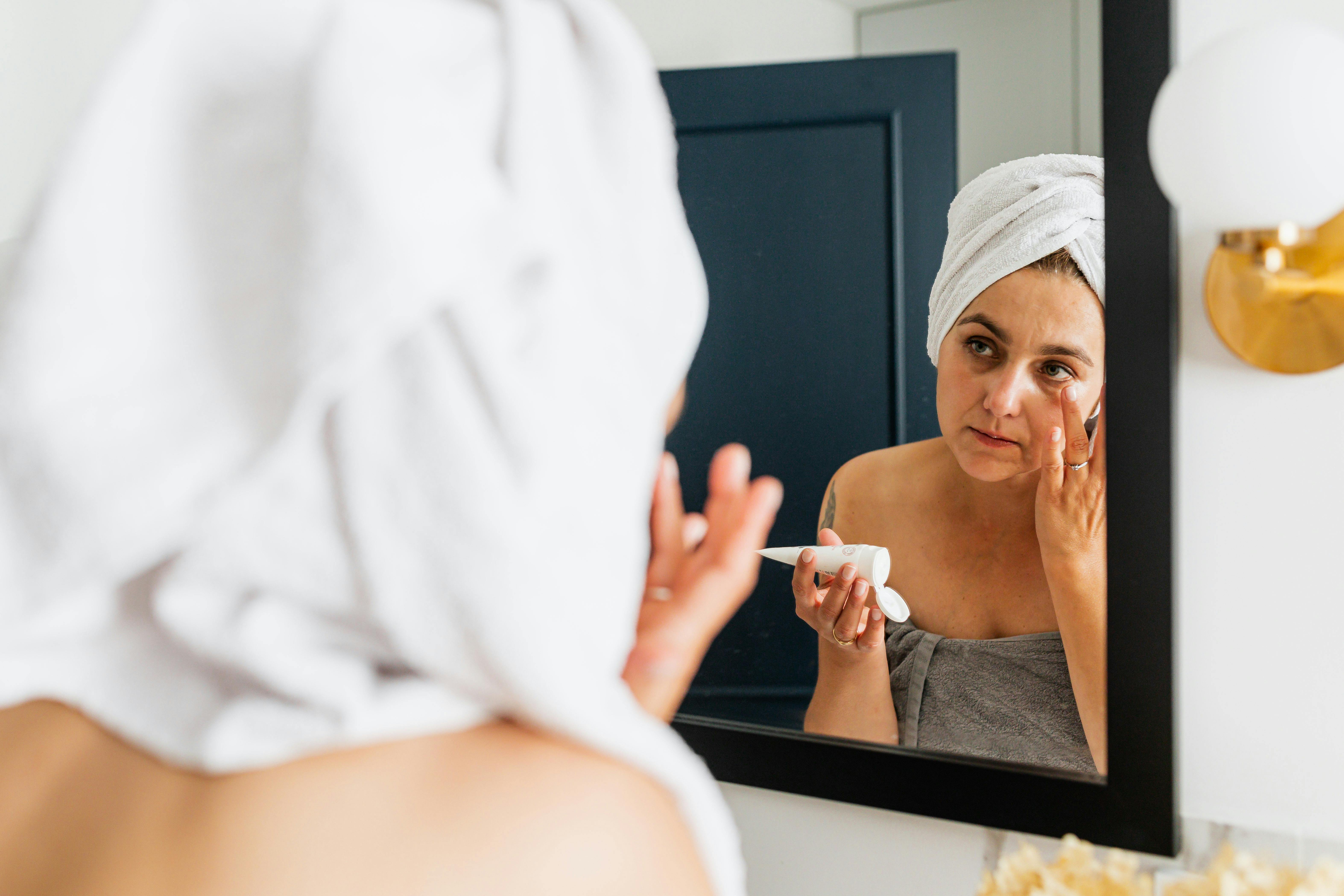Retinoids, including retinol, are powerful ingredients renowned for their ability to promote skin renewal, improve texture, and reduce signs of aging. They are a staple in many skincare routines due to their effectiveness in treating various skin concerns. Here’s a comprehensive guide to retinoids, including their benefits, how to use them, and what to mix and not to mix with them.
Benefits of Retinoids (Retinol)
Anti-Aging
- Reduces Wrinkles: Retinoids stimulate collagen production, which helps to reduce the appearance of fine lines and wrinkles.
- Improves Skin Elasticity: Increases skin firmness and elasticity, resulting in a more youthful appearance.
Skin Renewal
- Accelerates Cell Turnover: Promotes the shedding of old skin cells and the generation of new ones, leading to a smoother complexion.
- Improves Texture: Smooths rough skin and evens out skin tone by reducing hyperpigmentation and dark spots.
Acne Treatment
- Unclogs Pores: Helps prevent acne by keeping pores clear and reducing the formation of comedones (blackheads and whiteheads).
- Reduces Inflammation: Minimizes inflammation and redness associated with acne breakouts.
How to Use Retinoids (Retinol)
Introduction
- Start Slow: Begin with a lower concentration and gradually increase as your skin builds tolerance. Use every third night initially, then every other night, and eventually nightly if tolerated.
- Nighttime Use: Retinoids can make your skin more sensitive to the sun, so it’s best to apply them at night.
Application
- Cleanse: Start with a gentle cleanser to remove makeup, dirt, and oil.
- Dry: Ensure your skin is completely dry before applying retinoids to minimize irritation.
- Pea-Sized Amount: Use a pea-sized amount for your entire face, avoiding the delicate eye area.
- Moisturize: Follow with a moisturizer to hydrate and protect your skin barrier.
Product Recommendations
- Neutrogena Rapid Wrinkle Repair Retinol Oil: A potent retinol treatment that improves skin texture and reduces signs of aging.
- The Ordinary Retinol 0.5% in Squalane: A high-strength retinol in a hydrating base that reduces signs of aging and improves skin texture.
- CeraVe Resurfacing Retinol Serum: Contains encapsulated retinol to help reduce the appearance of post-acne marks and pores.
- Paula’s Choice 1% Retinol Treatment: A powerful retinol formula that targets wrinkles, large pores, and loss of firmness.
- RoC Retinol Correxion Deep Wrinkle Night Cream: Reduces the appearance of deep wrinkles and fine lines while you sleep.
- La Roche-Posay Redermic R Retinol Cream: Smooths fine lines, wrinkles, and reduces premature age spots.
- Olay Regenerist Retinol 24 Night Moisturizer: Provides 24-hour hydration with retinol to reduce wrinkles and improve skin texture.
- Murad Retinol Youth Renewal Serum: Targets signs of aging, improves skin texture, and boosts radiance.
What to Mix with Retinoids (Retinol)
Compatible Ingredients
- Moisturizers
- Advantage: Helps to hydrate and protect the skin barrier, reducing the potential for irritation from retinoids.
- Disadvantage: There are no significant disadvantages; moisturizers are essential for counteracting dryness.
- Product Recommendation: CeraVe Moisturizing Cream – Contains ceramides and hyaluronic acid to restore and maintain the skin barrier.
- Hyaluronic Acid
- Advantage: Provides deep hydration and soothes the skin, making retinoid use more comfortable.
- Disadvantage: No significant disadvantages; hyaluronic acid complements retinoids well.
- Product Recommendation: The Ordinary Hyaluronic Acid 2% + B5 – A hydrating serum that plumps and soothes the skin.
- Niacinamide
- Advantage: Reduces inflammation and strengthens the skin barrier, which can help minimize retinoid irritation.
- Disadvantage: No significant disadvantages; niacinamide is a gentle ingredient that pairs well with retinoids.
- Product Recommendation: The Ordinary Niacinamide 10% + Zinc 1% – A serum that brightens and calms the skin while improving its barrier function.
How to Apply
- Order: Apply retinoids first, followed by hydrating serums like hyaluronic acid, and then finish with a moisturizer.
- Layering: Allow each product to absorb fully before applying the next to maximize effectiveness.
What Not to Mix with Retinoids (Retinol)
Incompatible Ingredients
- Alpha Hydroxy Acids (AHAs) and Beta Hydroxy Acids (BHAs)
- Disadvantage: Combining these acids with retinoids can increase the risk of irritation and dryness due to over-exfoliation.
- Recommendation: Use AHAs/BHAs in the morning and retinoids at night, or on alternate days.
- Product Recommendation: Pixi Glow Tonic – An AHA toner that exfoliates and brightens the skin.
- Vitamin C
- Disadvantage: Vitamin C and retinoids have different pH requirements for absorption, which can reduce their effectiveness when used together.
- Recommendation: Use vitamin C in the morning and retinoids at night.
- Product Recommendation: SkinCeuticals C E Ferulic – A potent vitamin C serum that brightens skin and provides antioxidant protection.
How to Apply
- Order: If you must use both (for different purposes), apply them at different times of the day or on alternate days to prevent irritation.
- Separation: Consider using AHAs/BHAs and retinoids on different nights, or vitamin C in your morning routine and retinoids in your evening routine.
Advantages and Disadvantages of Mixing Retinoids
Advantages
- Enhanced Benefits: Mixing retinoids with compatible ingredients like hyaluronic acid and niacinamide can enhance hydration, reduce irritation, and improve overall skin health.
- Comprehensive Care: Combining retinoids with other gentle, beneficial ingredients can provide a well-rounded skincare routine addressing multiple concerns.
Disadvantages
- Increased Irritation: Mixing retinoids with strong acids or other potent active ingredients can lead to increased irritation, redness, and dryness.
- Reduced Efficacy: Using ingredients with conflicting pH levels (like vitamin C and retinoids) can reduce their overall effectiveness.
Conclusion
Retinoids, including retinol, are a powerful addition to any skincare routine, offering numerous benefits such as anti-aging, skin renewal, and acne treatment. Understanding how to properly use retinoids and what to mix and not to mix with them can help you maximize their benefits while minimizing potential side effects. For more personalized advice and product recommendations, explore our Skincare Essentials section or consult with a skincare professional.




